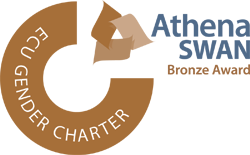Medieval Literature Class
Whan that Aprill with his shoures soote
The droghte of March hath perced to the roote,
And bathed every veyne in swich licour
Of which vertu engendred is the flour;
Whan Zephirus eek with his sweete breeth
Inspired hath in every holt and heeth
The tendre croppes, and the yonge sonne
Hath in the Ram his half cours yronne,
And smale foweles maken melodye,
That slepen al the nyght with open ye
(So priketh hem nature in hir corages),
Thanne longen folk to goon on pilgrimages,
And palmeres for to seken straunge strondes,
To ferne halwes, kowthe in sondry londes;
And specially fram every shires ende
Of Engelond to Caunterbury they wende,
The hooly blisful martir for to seke,
That hem hath holpen whan that they were seeke.
Bifil that in that seson on a day,
In Southwerk at the Tabard as I lay
Redy to wenden on my pilgrymage
To Canterbury with ful devout corage,
At nyght was come into that hostelrye
Wel nyne and twenty in a compaignye
Of sondry folk, by aventure yfalle
In felaweshipe, and pilgrimes were they alle,
That toward Caunterbury wolden ryde.
The chambres and the stables weren wyde,
And wel we weren esed atte beste.
And shortly, whan the sonne was to reste,
So hadde I spoken with hem everichon
That I was of hir felaweshipe anon,
And made forward erly for to ryse,
To take oure wey ther as I yow devyse.
Developing Your Thoughts
Style implies a way of seeing and ordering the world. Here the poet juxtaposes two different, even if not wholly disparate, ways of describing experience. Lines 1-18 depict a world of necessity, which happens, and will continue to happen, every year. The operations of the cosmos have certain recurring natural and cultural effects, and those operations are pictured in an elevated, formal way. Even if it is the case that the grand natural scheme of lines 1-18 prompts human actions, those human actions, as they are narrated in lines 19-34, are subject to chance and contingency. The very first word of the second sequence ('Bifil' - 'it chanced') suggests the accidental quality of narrative within the non-accidental scheme of nature; the same is true of 'by aventure yfalle': these pilgrims just happened to fall into company together. And whereas things happen by natural necessity in the cosmos, in the world of human narrative things happen by decision and pact: the pilgrims make 'forward' (an agreement) to rise early the following morning. The two worlds are not wholly unrelated: they share some of the same features (e.g. the sun), and the first governs the movement of desire in the second. Equally, the birds are 'pricked' by desire in their 'corages' in the first sequence, just as the narrator is ready to set off for Canterbury with a 'ful devout corage' at line 22. The two sequences are, however, governed by very different premises. The poet simply juxtaposes these stylistic and culturally disparate blocks without resolving the tensions between them.
We have so far restricted ourselves to understanding the passage within its own terms. Might it change our view were we to know more about the textual forms in which it was presented in the author's own lifetime, and to know who the author was? In fact this passage was written by Geoffrey Chaucer (1340-1400), and it is the opening of his Canterbury Tales (written between 1390 and 1400). Chaucer lived well before the introduction of printing into England in the 1470s, and before printing texts were copied by hand in manuscripts. Unfortunately no manuscripts of the Canterbury Tales survive from before Chaucer's death in 1400, and it is probably the case that he died before the poem was complete. Very early fifteenth-century manuscripts do survive, however (seven of them in Cambridge libraries). Consider, for example, the Ellesmere manuscript presentation of the passage we have read (now in the Huntington Library, San Marino), which dates from the first quarter of the fifteenth century. Are there features of the manuscript presentation that might be relevant to an account of the style of the passage?
©James Simpson 2000

